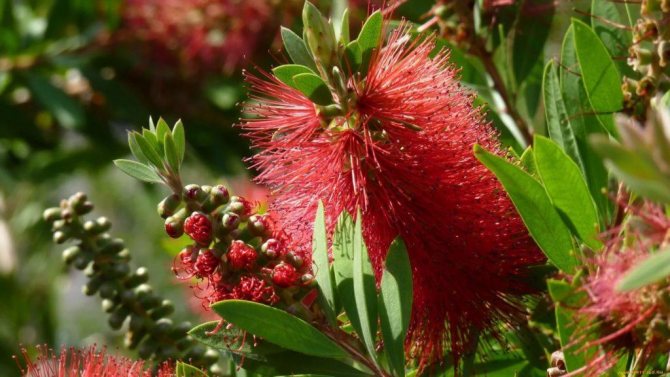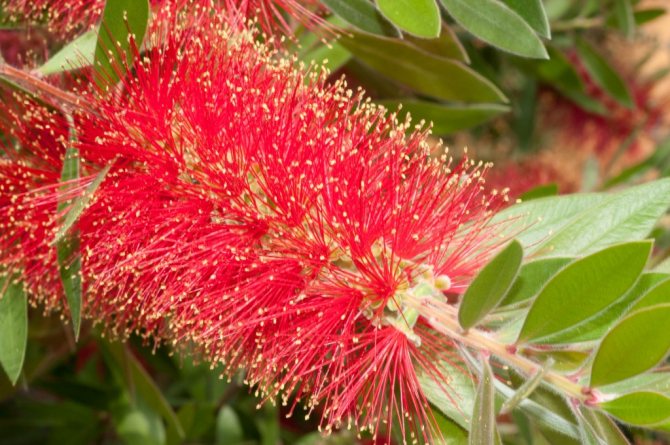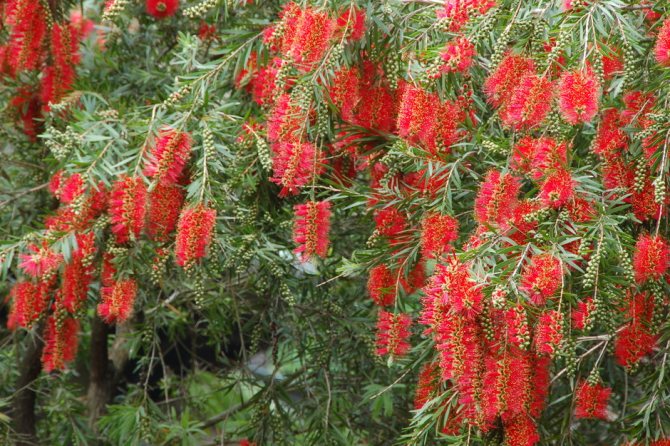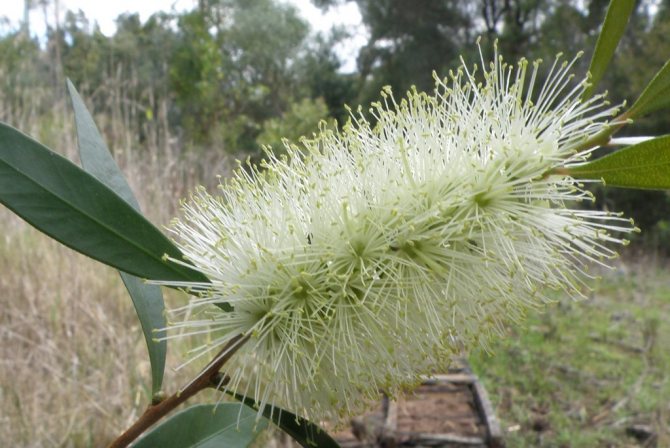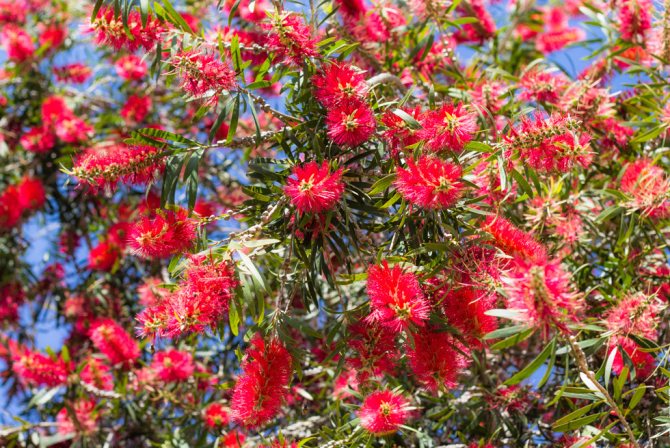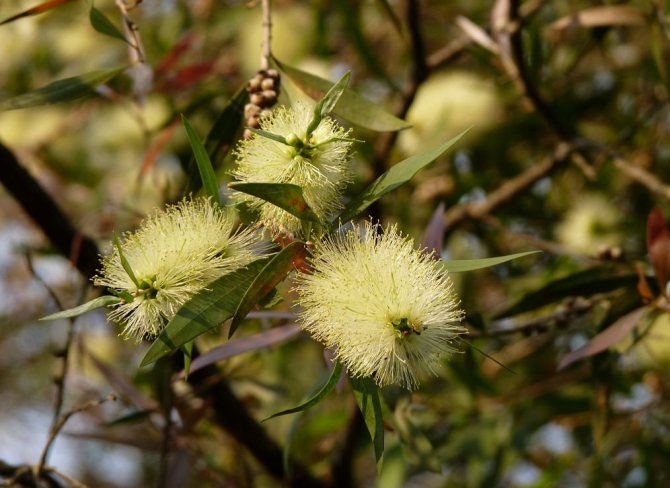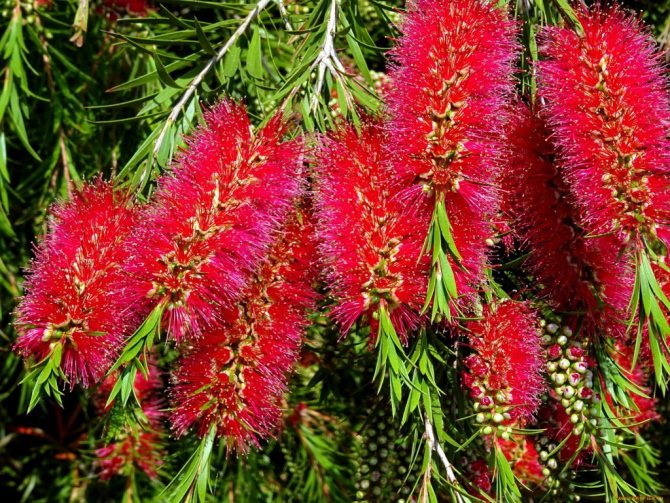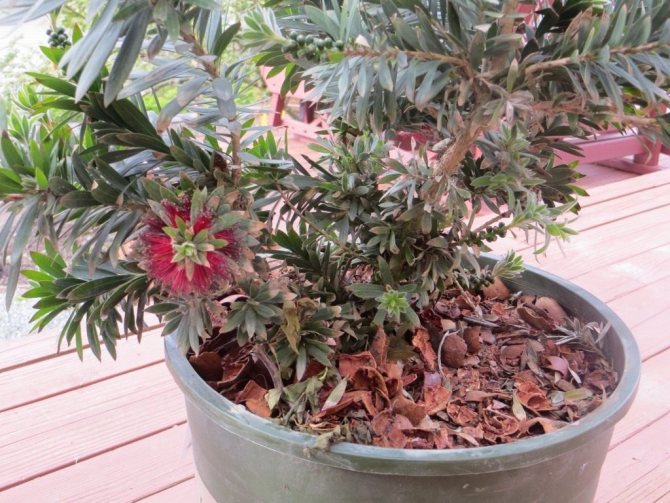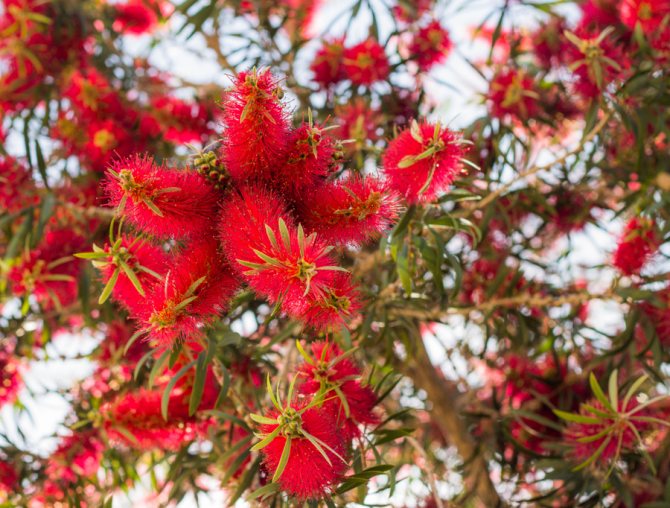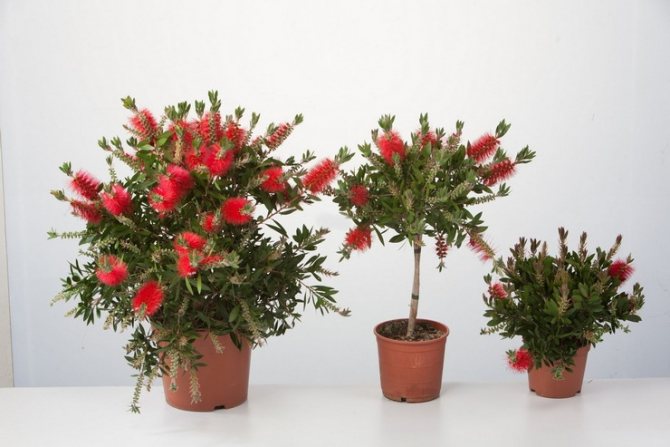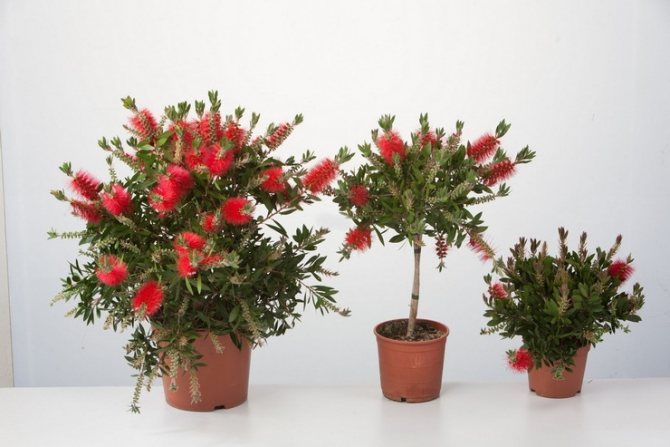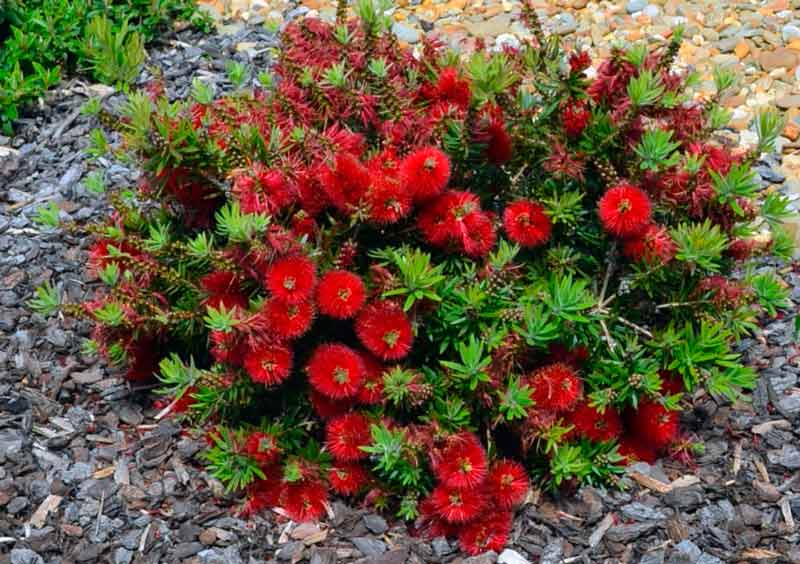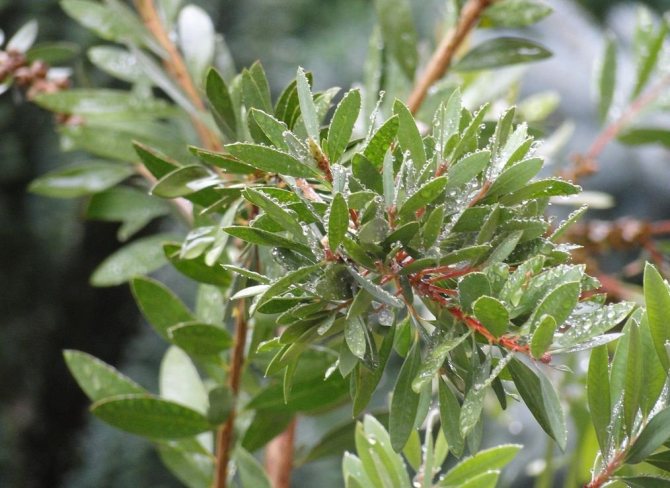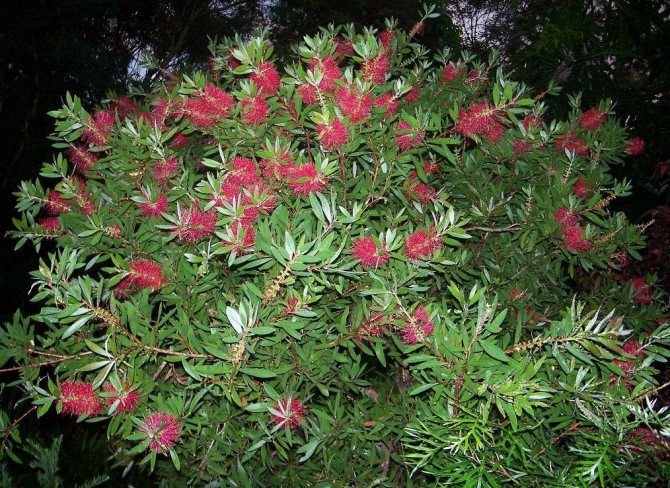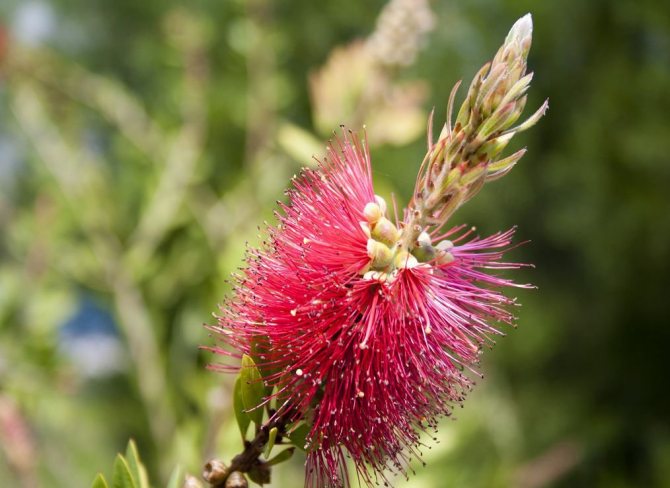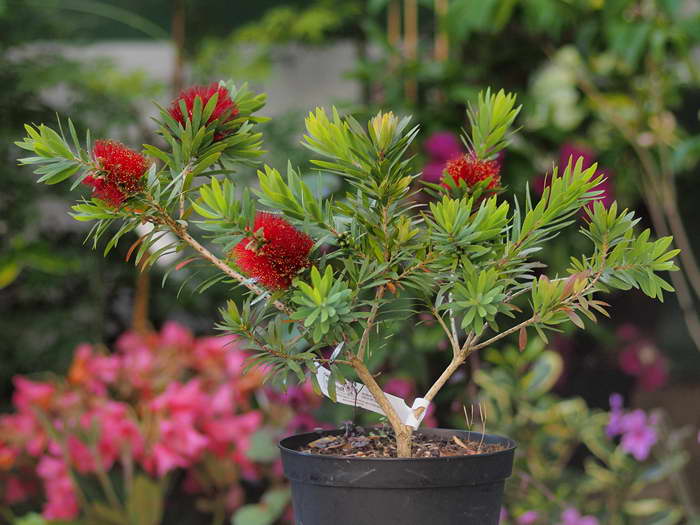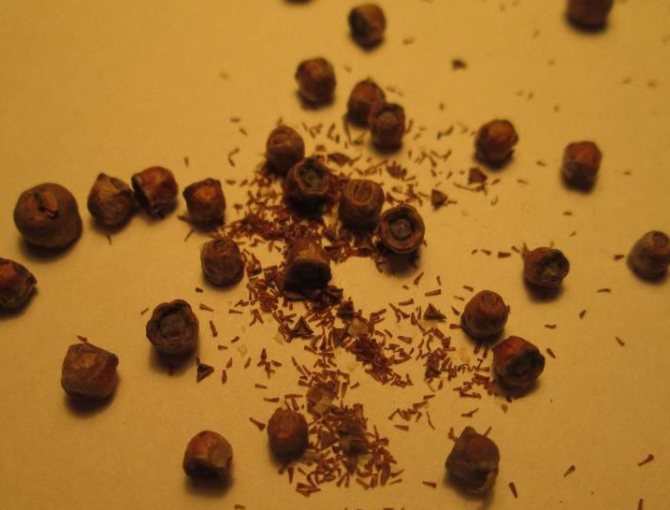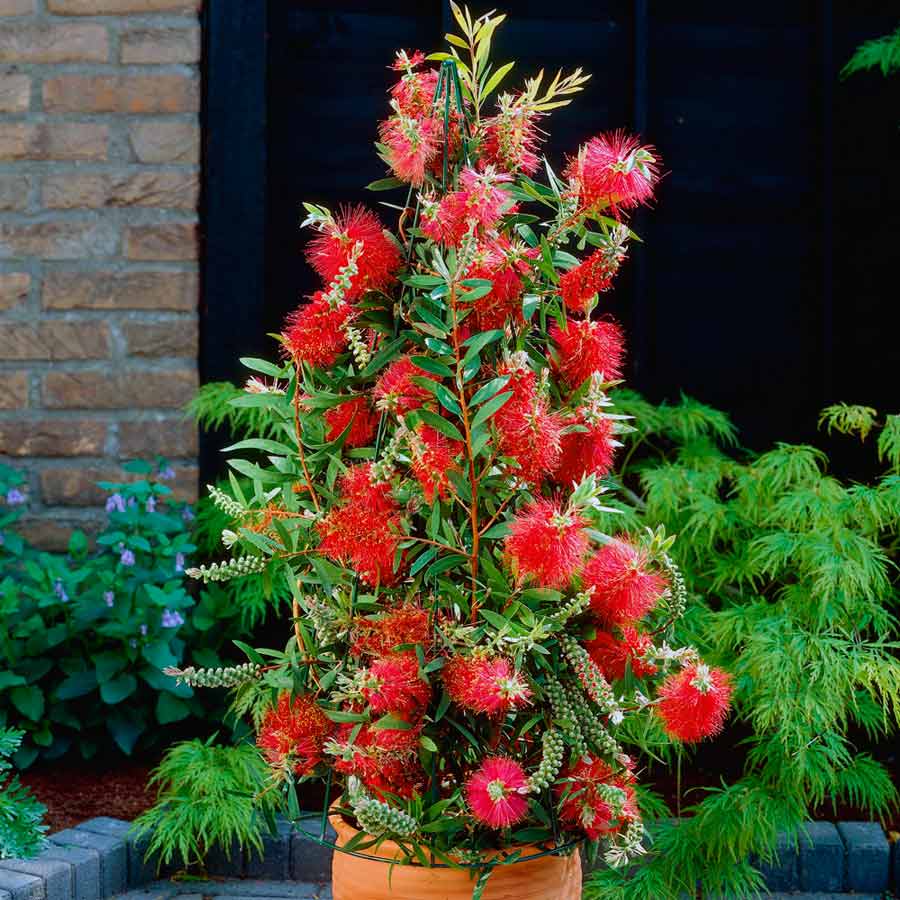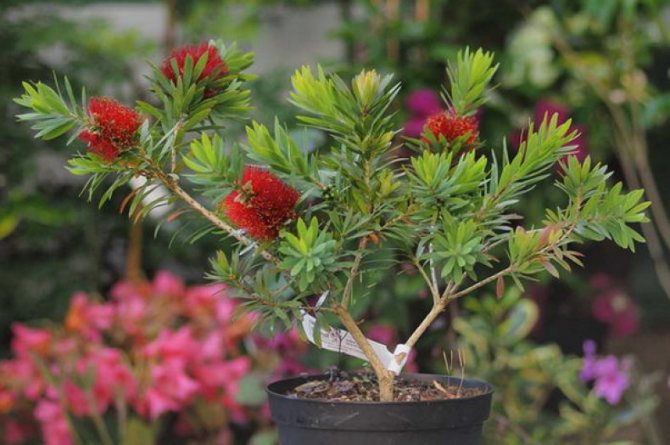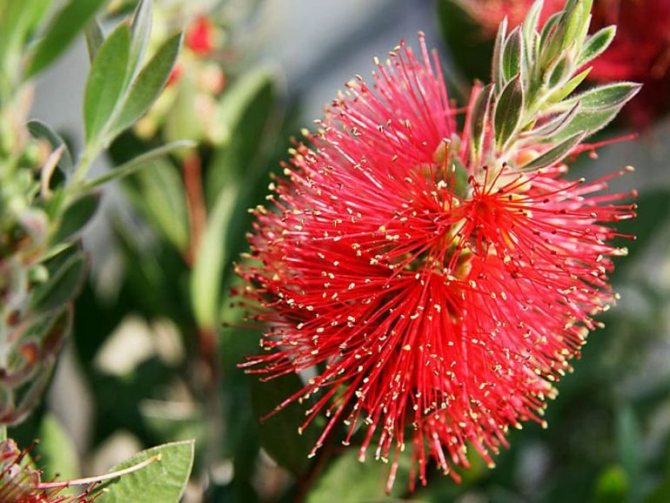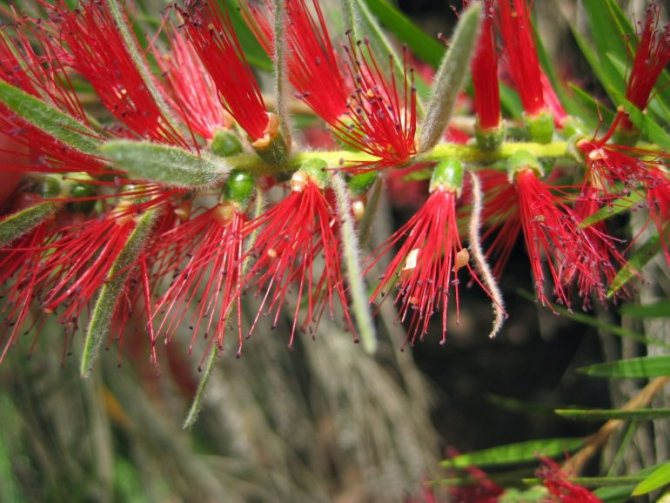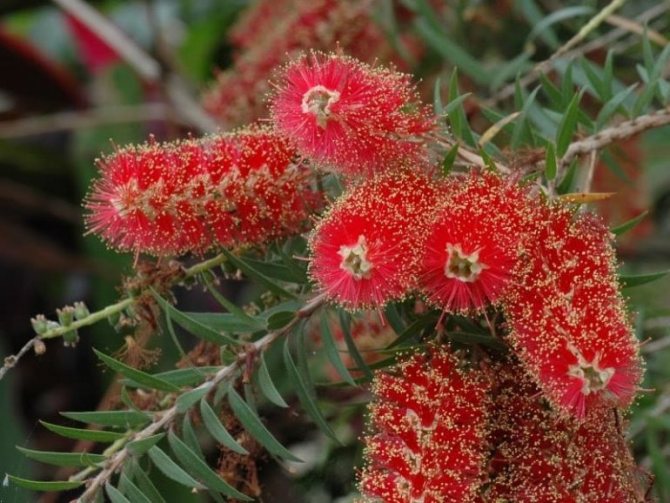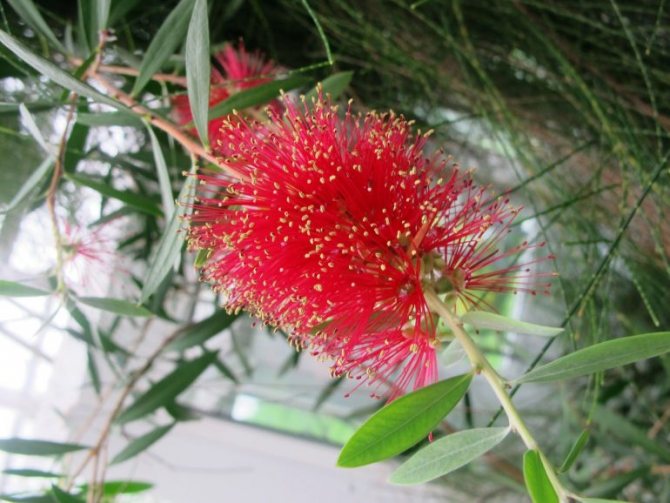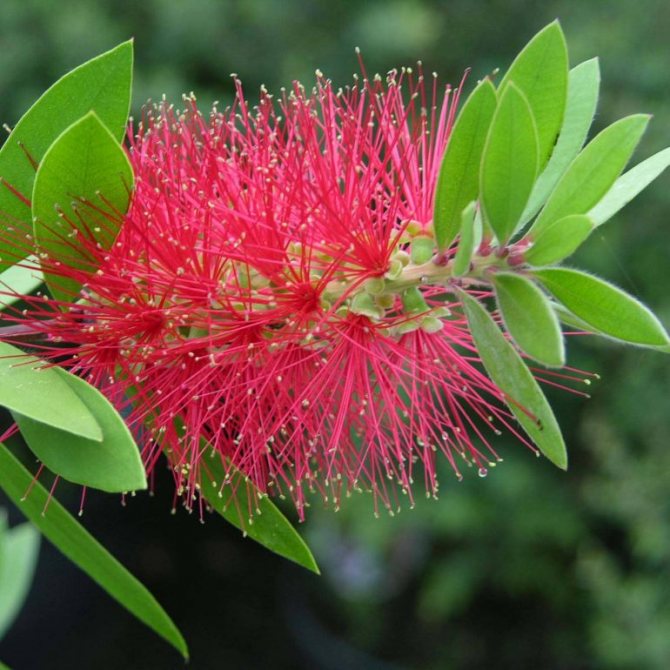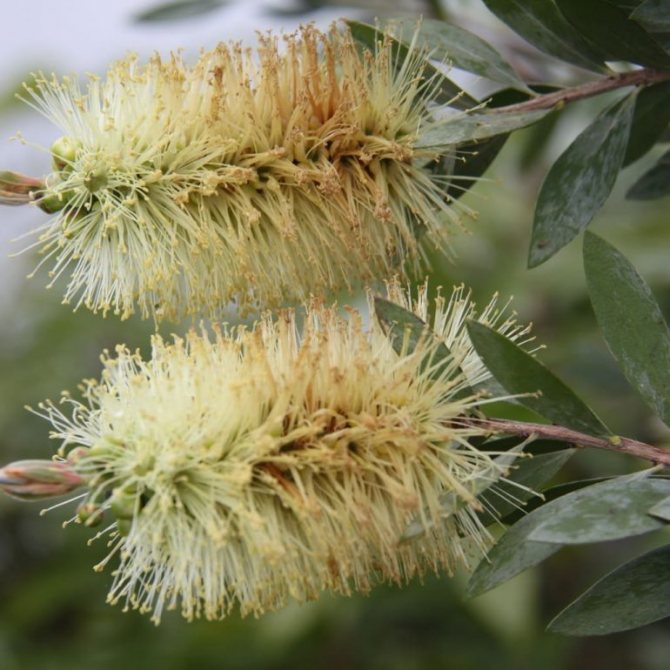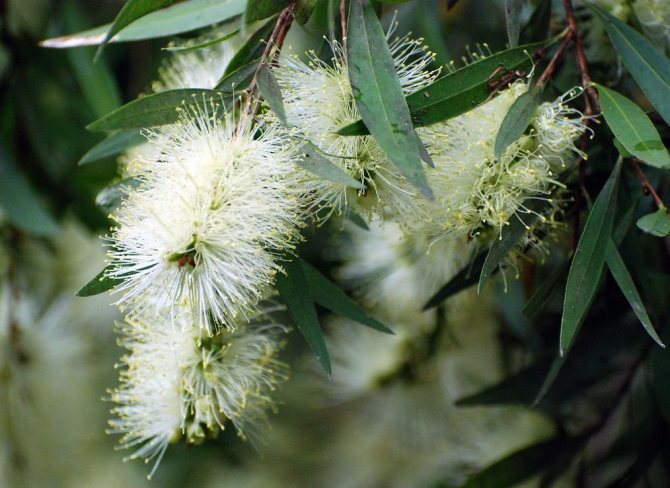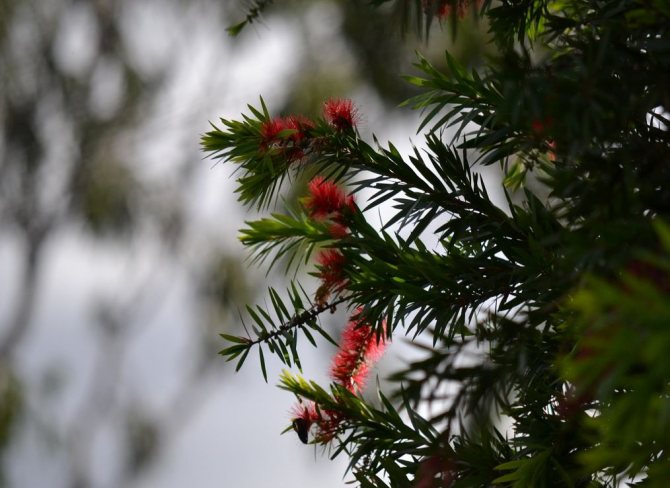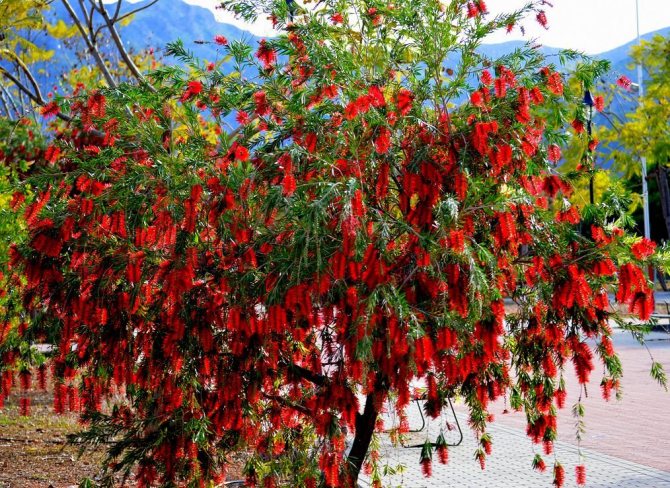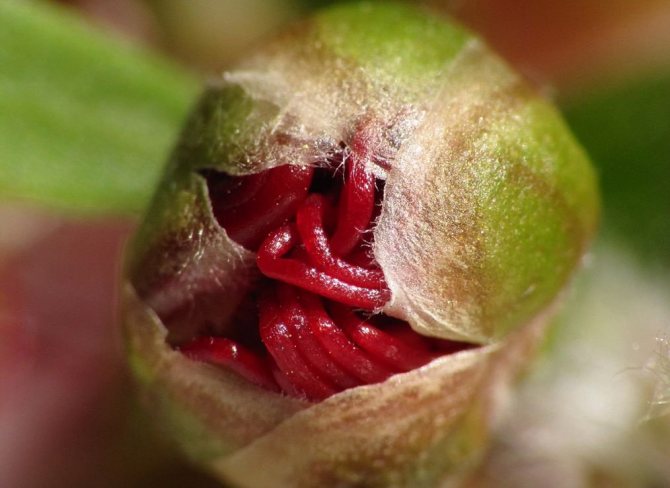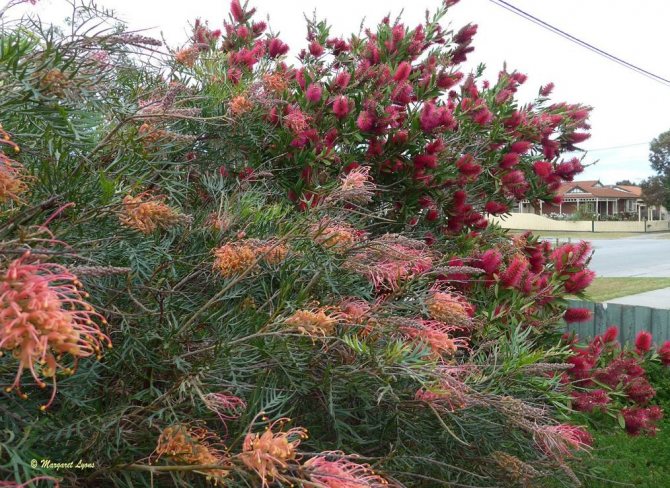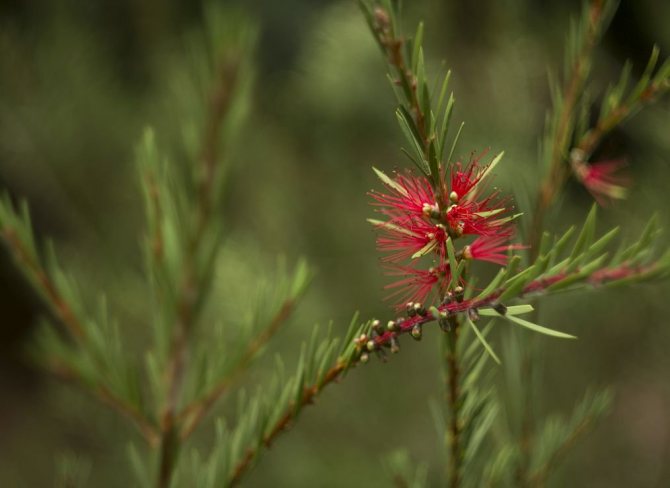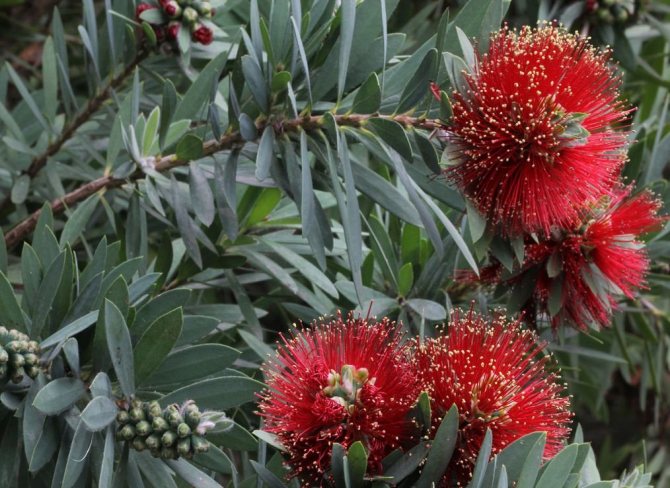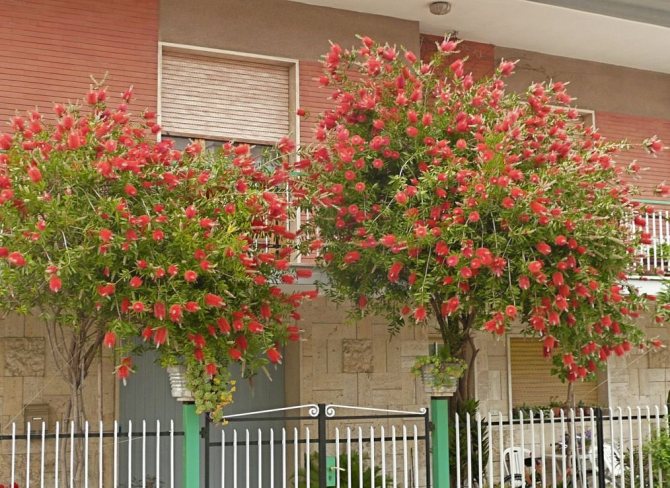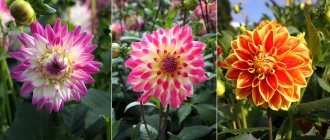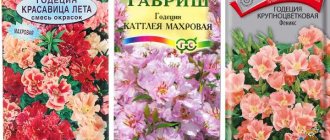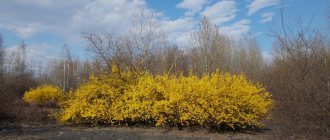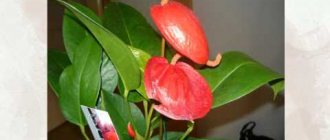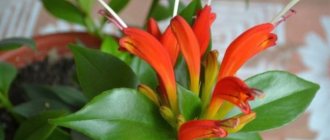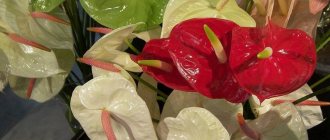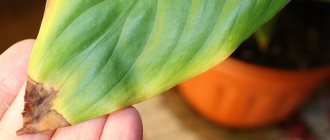Callistemon is an exotic shrub from the Myrtle family. Its amazing inflorescences, consisting of many long stamens, form unusual brushes at the ends of the shoots. For this, callistemon can often be found under the names "Bengal candles" or "mnogotynochnik". Exotic bushes are good both in the garden and indoors. In the summer they are used to decorate terraces or balconies, and in the winter they are taken into the house. It is not difficult to take care of the plant, so even a novice florist will be able to delight himself with tropical exoticism. In addition, callistemon secretes phytoncides, which prevent the spread of pathogenic microbes in the air.
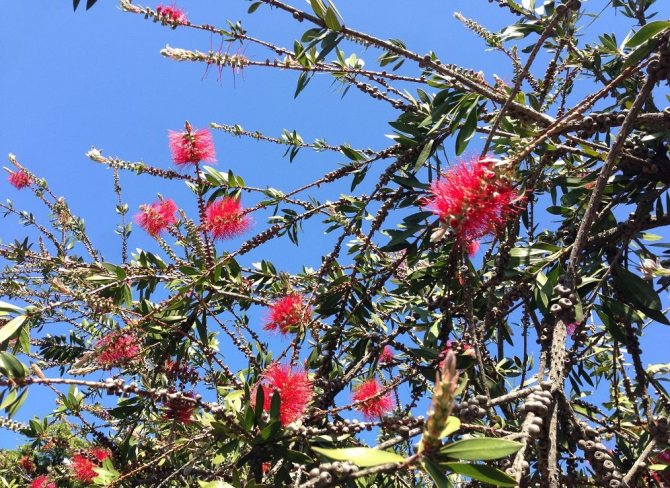
Lighting and temperatures
Representatives of Myrtovs love bright enough light. Lighting is the main requirement of the callistemon. In summer, callistemon, like no one, perceives even the direct rays of the sun well, if it was previously gradually adapted to them. The south windows are the perfect place for a callistemon. With a small amount of light and not a cold winter, callistemon will not bloom or the color will be pale.
A close neighborhood for a callistemon is bad for its development.
The warm season for callistemon maintains temperatures in the region of 20-22 ° C, then they gradually move to winter temperatures up to 8-10 ° C. A greenhouse or a heated veranda with lighting is well suited for wintering.
Callistemon. "Bengal candle"
The exotic bush, which I will talk about in this article, is my old dream. I fell in love with him in absentia, from photographs in a book about the flora of Australia. “Live” I saw a callistemon at my colleague’s dacha: a bush growing in a tub was strewn with fiery red fluffy “brushes”. These flowers simply sparkled against the backdrop (against the sun). It even seemed that the light was coming from within. So that's why callistemon inflorescences are compared to Bengal candles! I took two cuttings from this bush and raised two callistemons. So my dream came true! I think you will share with me the delight of this plant and also want to have "Bengal candles". Moreover, the seeds and seedlings of callistemon have already appeared on sale.
Interesting that ...
The word "callistemon" is translated from Greek "beautiful stamen". And here he is also called "beautiful chicks". And to the Germans and the British, callistemon inflorescences resemble fireplace brushes, and they call this plant accordingly.
Callistemon is an evergreen small tree or bush 1-1.5 m high with dense foliage, surprising with fragrant flowers collected in fluffy ears of 10 to 18 cm long.Almost 5-centimeter stamens protrude in different directions, resembling sparks of a sparkler or bottle brush bristles.
The foliage of callistemon looks very picturesque due to the contrast of dark green adult leaves and light green young ones. The leaves are always turned sideways to the sun - this is how the plant retains moisture and is protected from direct sunlight.
There are about 35 species of beautifully bristled grass, the most popular of which are subulate, woven, pine, willow, wrinkled, lemon yellow. They differ in the shape of the leaves (from acicular to lanceolate) and the color of the inflorescences (from bright red to white). The most popular type is callistemon lemon yellow
(Callistemon citrinus Stapf).It is named for the lemon scent of crushed leaves.
Pruning and pinching
The operation of pruning callistemon is indicated immediately after flowering for plants over one year old, usually in early spring when cone-shaped fruits with seeds appear. After the procedure, branching is stimulated in callistemon, the crown becomes more luxuriant, the next flowering will also be more active and large.
When the seedling reaches a height of 50 cm and has several branches, the central stem is pinched.
Cuttings after these procedures are taken for plant propagation or for medicinal purposes, for the preparation of decoctions for external use.
Callistemon pest and disease control methods
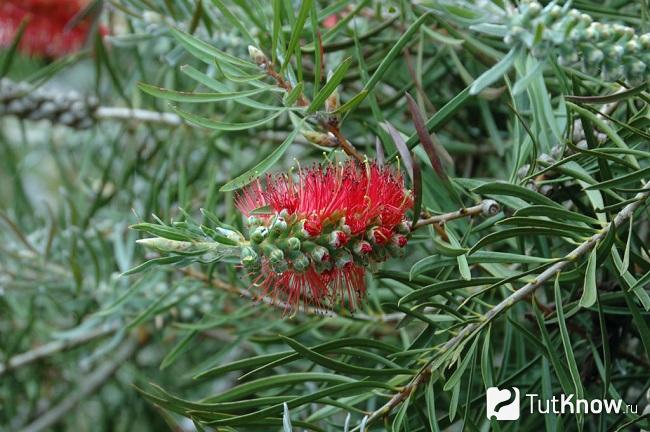

From harmful insects that can harm callistemon, mealybugs, scale insects, aphids, whiteflies, thrips and spider mites are isolated. All of them begin to infect a plant with inflorescences-brushes, if the conditions of detention are violated, for example, the humidity level is too low or there is a frequent flooding of the substrate. It is necessary first to try to wash the leaves of the red-grass plant under warm shower jets, and then to carry out the treatment with non-chemical agents so as not to cause a serious impact on the bush. Such drugs can be soap, oil or alcohol solutions. Before processing the soil in the pot, it is recommended to cover it with plastic wrap so that drops of liquid do not fall on the roots.
If such drugs help little (or do not contribute to the destruction of pests at all), then insecticidal agents are used, for example, Karbofos, Aktaru, Aktellik or similar.
It happens that there are other problems, including:
- drying out of leaf plates can occur due to excessive watering of the soil or a large amount of fertilizer has accumulated in it;
- no buds are formed, the plant does not bloom, in case of a lack of lighting or in winter, the heat indicators were too high;
- the red-spotted grass can wither because of the calcareous soil.
Diseases and pests
Callistemon is resistant to disease, if the recommendations for its care are followed.
Pests: spider mites, scale insects, mealybugs.
Callistemon is an ornamental houseplant, characterized by unusual flowers, consisting of hundreds of long, bright stamens, similar to cleaning brushes.
A kind of callistemon, home care for which will be discussed in detail here, can be grown not only in the room, but also in open areas. Due to its unpretentiousness and beautiful appearance, the plant has become popular in many parts of the world, where it is used to decorate gardens, parks, balconies and window sills.
Callistemon is an evergreen shrub or tree plant belonging to the Myrtaceae genus and includes more than 40 species. Australia is considered his homeland. In the wild, callistemon can reach 15 meters in height. There are also smaller shrub species growing up to 1-2 meters.
The plant branches strongly, forming a dense crown. Young stems are usually green, later they become woody and form a brown-gray bark. The short petiolate leathery narrow lanceolate leaves have a pale green color with a grayish tinge, and exude an aroma thanks to the ethers they contain. The released ether has bactericidal properties.
The air in the room where the shrub grows becomes cleaner, and the ethers themselves have a beneficial effect on the body.
Callistemon blooms in early summer. Flowers form at the end of the shoots, gathering in numerous spike-shaped inflorescences, consisting of stamens. Each flower is 8 to 12 cm long and 3-10 cm in diameter.
In appearance, these unusual flowers look like brushes for cleaning bottles. The color of flowers can be red, crimson, orange, white, yellow.
If pollination (by birds) occurs, then dense round capsules with seeds are formed on the tops of the spikelets. Under indoor conditions, callistemon cannot be pollinated, therefore it does not form seeds.
The plant is not hardy. Grown in open areas, it requires insulation if the winters are cold. In regions with a harsh climate, the shrub is found mainly in rooms, winter gardens, greenhouses.
Callistemon, description and photo of the plant
Not many callistemon species are adapted to growing at home. Most of them belong to low-growing shrubs, reaching a maximum of 3-5 meters in height. Let's get acquainted with the varieties of plants that are adapted to artificial breeding and indoor life.
- TO.lemon (Callistemoncitrinus).
This is the most popular species, with one difference - the small leaves of the bush have a pleasant lemon scent. The tree can reach 4-5 m in height. The flowers are bright red up to 10 cm in length. - K. rod-shaped (Callistemonviminalis).
It has numerous long, thin shoots and medium-sized leaves. The height is small - 1-3 m. The spike-flowers are large, often hanging down with their heads. The color of the flowers is red or orange. - K. linear (Callistemon linearis).
Shrub height - 1-2 m. Young stems are slightly pubescent. The leaves are narrow, small. Dense inflorescences, up to 12 cm long, have a bright red or carmine color. - TO.brightly—red(Callistemon coccineus).
The size of the shrub can reach 4 m in height. Leaves are narrow-lanceolate, up to 5-6 cm in length. Shoots are slightly pubescent. During flowering, numerous inflorescences with dense red stamens are formed. - K. willow (Callistemonsalignus).
Differs in stature (8-12 m in height) and light colors. They are usually white, cream or yellowish. In appearance, the tree is very similar to a willow, for which it got its name. - K. beautiful (Callistemon speciosus).
A small bush sprouts thin shoots and narrow leaves 3-4 cm long. Thick lush inflorescences have a red or rich crimson color. This species, along with lemon, is better than others for home cultivation. - K. pine (Callistemon pinifolius).
A low-growing bush (1-1.5 m) has leaves very similar to coniferous thorns. The inflorescences themselves are also original - their yellow-green color harmoniously merges with the leaves. - K. Formosa(Callistemon formosus).
Shrub, 3-5 m high with weeping (drooping) thin rod-shaped shoots. Lanceolate leaves 6-8 cm long at conception have a purple hue, then turn green. The color of the staminate flowers is red-yellow.
Description
In natural conditions, callistemon grows in Australia, Tasmania, New Caledonia. It is there that you can find it in the form of both a shrub and a low tree. It is an evergreen plant with leathery, grayish-green leaves that spiral up the trunk.
Their edges are quite sharp and are always directed with an edge towards the sun to avoid burns. In the fleshy tissue of the leaves are glands full of essential oils.
Did you know?
The name of the plant was formed due to the combination of two words - "kallos" - beautiful and "stemon" - stamen.
Closer to summer, callistemon blooms. At this time, large (up to 12 cm) fluffy spikelets from many inflorescences with long stamens appear on the tops of its stems. Depending on the subspecies, flowers can delight the eye with white, yellow, pink, red shades.
The cylindrical shape of the inflorescence resembles a bottle brush. In the wild, the plant is pollinated by birds, therefore, as it ripens, woody balls-boxes with seeds appear on the tops of the ears.
Callistemon belongs to the Myrtle family and is represented by many varieties, among which the most popular are recognized:
- Pine-leaved (Callistemon pinifolius).
The species got its name thanks to the leaves, similar to needles needles up to 12 cm long and 0.15 cm in diameter. They have a shallow groove on the upper side. Their color is pale lilac, so short, densely growing yellow-green flowers look great against its background. - Rod-shaped (Callistemon viminalis).
Its "spikelets" are fluffed with long silky hairs, and the leaves can be of different sizes.Specimens with small leaves, which grow densely on the shoot, are especially appreciated. - Lemon (Callistemon citrinus).
The subspecies is distinguished by lanceolate leaves, which, when rubbed, spread a lemon scent. Its spike is famous for its rich bright red color, which looks great against the background of small leaves. - Willow (Callistemon salignus).
Quite a large specimen for this family (can reach 12 m in height). Its inflorescences in the form of a cylinder stretch for 7-8 cm, and the stamens are full of all shades of yellow, pink and white. Leaves up to 1.2 cm wide, pointed at the end.Did you know?
The first callistemon specimen was introduced to Europe in 1789 by Joseph Banks for the Royal Botanic Gardens in Great Britain. - Fine (Callistemon speciosus).
This species feels great in cool rooms, therefore it is actively used as a potted plant. It can reach a height of 4 m, but rarely grows to such a scale. Its shoots are grayish-brown, and the flowers are distinguished by a large number of oil glands.
In the northern hemisphere, callistemon is always grown as a houseplant or in winter gardens, since it does not tolerate frost well.
How to care for callistemon at home
Despite the exoticism, the shrub does not require special attention. Growing callistemon and caring for it at home will be within the power of even inexperienced beginners. Below are detailed recommendations on how to properly care for this wonderful beautiful plant.
Location selection, lighting
Like all plants from the Myrtle family, callistemon loves the sun and bright light. But in hot regions, it should be protected from the midday summer radiation, shading during the very peak of the heat.
The best places to place shrubs are south, southwest, southeast windows. If for some reason it is not possible to find a sunny place for the flower, then you can supplement it with artificial lamps.
In summer, flowerpots can be taken out to open areas, choosing places for them with diffused lighting. If the plant does not have enough light, then it blooms very poorly.
Temperature for growing shrub
In summer, the optimum temperature for a flower is + 20-25 ° C. The bush does not tolerate extreme heat. In the cold season, it is advisable to immerse the plant in a cooler environment with a temperature of + 12-16 ° C so that it can rest. Such a change in conditions is necessary for abundant flowering.
The culture does not tolerate frost. Cold below + 5 ° C is considered critical. If the bush grows on the street, then for the winter its roots must be insulated, and the crown is covered from above with a greenhouse.
An important condition for keeping a plant indoors is a constant supply of fresh air. But at the same time, you should not put the pots in a draft.
Humidity
Callistemon is not particularly picky about air humidity, but completely dry air is not recommended for it. The ideal humidity is medium, not less than 30% and not more than 65%. In summer, when it's hot, you can spray the bush with a spray bottle. This should be done after sunset or at dawn so that the rays do not scorch the flowers and leaves when the water evaporates.
Callistemon flower
How to water callistemon
The shrub needs abundant watering from spring to late summer. The soil at this time should dry out between irrigations by no more than 70%. But it is important to ensure that the water does not stagnate. Despite the fact that callistemon loves moisture, overflow is destructive for him, as it leads to acidification of the earth and to rotting of the roots.
With the beginning of autumn, watering is reduced so that the top layer of the substrate dries out completely. In winter, it is very important to keep moisture in moderation.
Water for irrigation should always be warm (room temperature) and settled. Hard and highly chlorinated water should be softened with acetic acid or lemon juice (3-4 drops per liter).
Fertilizer
Home-grown callistemon needs feeding, especially during the growing season. Fertilizers are selected complex mineral for flowering plants. They are introduced into the soil 2 times a month, diluting according to the instructions.
In September, feeding is reduced to 1 time per month and completely stopped by the end of November.
Soil, transplant
The root system of the flower grows rapidly. It is recommended to replant young specimens annually, adults - once every 2-3 years. Pots should be selected not very large in diameter. A plant thrives when its roots are closely intertwined.
The transplant is carried out in the spring, in rare cases after flowering in the fall.
Callistemon needs loose soil, neutral in acidity. In stores, you can buy a ready-made universal substrate. Preparing the soil mixture yourself, mix the following components:
- Sod land - 2 parts.
- Leafy ground - 2 parts.
- Peat - 1 part.
- Sand - 1 part.
Before filling the pot with soil, it is necessary to lay a drainage layer on the bottom.
Callistemon is propagated at home in two ways: by seeds and cuttings. Since flowers are not pollinated in an artificial environment, the shrub does not form seeds. You can buy them at a flower shop.
Seed propagation
Seeds are sown at the end of February in the standard way: first, they are soaked for several hours in warm water, then sown in a pre-prepared container with a substrate of peat and sand. The container is covered with foil or glass, creating greenhouse conditions. It is necessary to leave small openings for air exchange. Water the soil with a spray bottle so as not to erode the top layer.
Until shoots appear, the container should be kept in a room with a constant temperature of at least + 22 ° C. In this case, light is optional. As soon as the first shoots appear above the ground, the shelter is removed and the container is exposed to the light. When the entrances reach 5-8 cm in height, they can be seated.
Propagation by cuttings
This method is simpler and more suitable for amateur florists. In the spring, a young, healthy shoot is cut off from the bush and rooted in a container with a sand-peat mixture. The stalk should be in a well-lit place. The substrate is watered as it dries. After about a month, it will take root well and can be transplanted into a permanent pot with a full-fledged soil mixture.
If the cut shoot is placed in a glass of water, it will also quickly root. The water in the container must be changed every 3-4 days. After the formation of roots, it is planted in a pot with a substrate.
Diseases and pests
In indoor conditions, pests rarely infect the plant.
The most dangerous enemies for the shrub are scale insects, spider mites, mealybugs. From time to time it is necessary to inspect the flower.
Another danger to the culture is represented by fungal diseases. The main problem is that fungi can go unnoticed for a long time, corroding the root system and the base of the stem. They can be seen by the gray, black or brown spots formed on the soil and stems. There are also effective fungicides against mold infections.
Diseases from improper care
- With a lack of light, the shrub will grow poorly, its flowering will be poor.
- Waterlogging can lead to dropping or drooping of leaves, lethargy of young shoots.
- The leaves dry out from drought.
- Brown and yellow spots on the leaves indicate sunburn.
- In a draft, the tree may also begin to shed its leaves.
- Too alkaline soil will dry out the plant.
Callistemon, which we looked at at home, is a very useful plant. Due to the high content of ethers in the leaves, it cleans the air from microbes, heals the respiratory system.And the decorative beauty of the bush and its bright colors will give aesthetic pleasure and cheer you up on a gloomy day.
Callistemon are stunted trees or shrubs with spike-shaped inflorescences. There are more than 25 species of this plant, and its homeland is Australia, Tasmania. This plant branches beautifully without human intervention, so it is often used to decorate apartments, houses and public institutions.
Almost all types of callistemon can be grown at home. The seedlings of this plant are unpretentious and bloom for a very long time. A distinctive feature of callistemon is long spikelets-flowers, the length of which ranges from 3 to 12 cm. They have poorly expressed petals, but each basket of petals contains a stamen of amazing beauty from 2 to 3 cm long inside.
The leaves are lanceolate and very tough, depending on the variety, their color ranges from rich green to marsh. Each flower is small, but they are collected in fancy spikelets, thanks to which the plant has the effect of a gazebo - the spikelets hang down, forming a kind of canopy, and their beginning at the branch is crowned with leaves.
Citrus callistemon
Callistemon lemon or, as it is also called, citrus. The plant came to our region from South Australia, its minimum height is 1 meter, and the maximum is 3 meters or more. The leaves of such a plant can reach 7 cm in length, and the spikelet flowers grow up to 10 cm, the staminate inflorescences are distinguished by a pleasant raspberry color.
Callistemon lemon blooms in June. Note that this species has many different varieties:
- Shining Lemon Callistemon - red inflorescences, compact crown and plant height no more than 2 meters.
- Anzac is white, which blooms with white spikelet flowers. This variety is low, and under favorable conditions, its maximum growth will be up to 1.5 meters.
- Burgundy will delight you with bright red inflorescences.
- Little John is a short variety, and its height does not exceed 1 meter.
- Lilac inflorescences and medium height are the Lilac Mist cultivar.
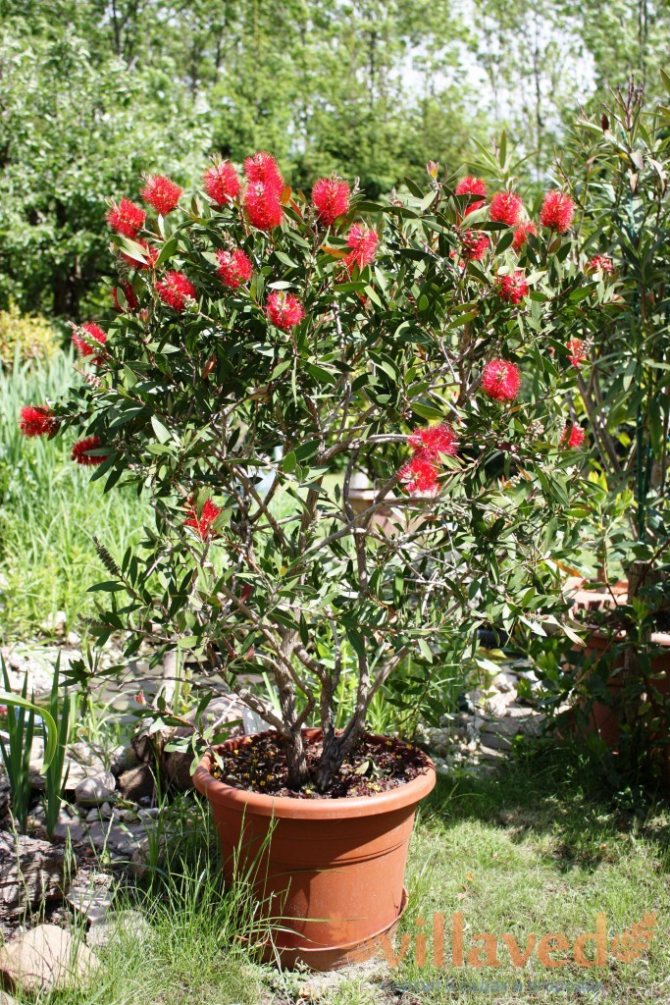

Lemon Callistemon got its name from the citrus scent of its leaves when damaged. It is enough just to rub a bright leaf in your hands, and you will feel a rich aroma.
Red callistemon
The bright red callistemon is also native to South Australia. The growth of this shrub can exceed 4 meters, its leaves grow up to 7 cm, and the inflorescences up to 9 cm. The callistemon stamens are red, and the anthers are yellow, which gives the plant a golden hue.
Willow callistemon
In vivo, the growth of this callistemon species can be seen in New South Wales and Queensland. The willow callistemon is considered the tallest member of the genus. It can grow up to 10 meters in height and looks more like a tree than a modest shrub.
Not only the growth rates are amazing, but also the special bark - white, even creamy, like the thinnest paper. Its leaves reach 7 cm in length, inflorescences stretch up to 8 cm, and filaments up to 2 cm.The plant blooms with creamy, white and yellowish-pink flowers of soft shades.
Callistemon willow leaf is a very popular species among gardeners, especially in the subtropics. Today willow shrubs and trees of this species have been artificially bred, which bloom with purple, red, deep pink inflorescences.
Callistemon rod-shaped
The plant blooms with purple flowers, its growth reaches 7 meters. The most popular variety is Captain Cook, it is especially convenient to grow it in an apartment.
Features of callistemon care
Callistemon is a delicate and very demanding plant that requires strict adherence to the rules of care.
Site selection and lighting
The main requirement
callistemona in care - good lighting. The plant feels comfortable only where there is a lot of sun - on the southern windowsill.
Callistemon has one more rare feature
- the more light he receives, the brighter his flowers will be.The optimum temperature for a plant in the warm season is
from 20 to 22 ° С
, autumn-winter -
from 5 to 8 ° C.
Callistemon loves when there is a lot of space and air around him. From early June to September ideal place for a plant
there will be a balcony, veranda or terrace
.
At the end of September, when growth slows down and sets in
dormant period
, callistemon can be transferred to a cool room with additional lighting for the winter.
Humidity and watering
Callistemon prefers moderate humidity and does not tolerate too dry air. Spraying will only go to him for good
... Water it regularly to avoid drought.
Callistemon extremely dislikes
stagnation of water in the ground. Large holes must be made at the bottom of his pot so that excess water leaves, which must be drained from the pan in time.
Callistemon should be watered and sprayed with soft, settled water at room temperature.
Transfer
Callistemon prefers a slightly acidic soil, provided with good drainage: turf, peat and sand (2: 1: 1). Soil rich in lime plant does not tolerate
.
If a white or reddish bloom has formed on the surface of the soil (salt fallout), it is necessary to remove this layer and add fresh soil.
Most comfortable
the young callistemon feels in a cramped pot, so it is recommended to transplant it only after the entire container is completely filled with roots once every 1 to 2 years in the spring. A large adult plant can do just fine by replacing some of the soil in its permanent pot.
Top dressing
The most the best feeding
for callistemon it is a universal fertilizer with a low phosphorus content. For this, feeding for heather and azaleas is well suited. But it must be borne in mind that in the case of this beautiful plant, it is better not to feed than to overfeed. Eating too much can lead to
yellowing and death of leaves
.
Pruning
Prune callistemon in early spring or immediately after flowering, when on twigs instead of flowers
not very beautiful pineal capsules with seeds are formed.
Pruning callistemon allows you to restrain plant growth, form a crown and stimulate bushiness, followed by abundant flowering.
Cropped shoots are used by flower growers for cuttings or medicinal purposes. A decoction of callistemon leaves for external use helps for skin problems
.
How to grow an exotic plant at home: from seeds to flowering shrubs
Growing callistemon at home is no different from growing simple marigold or asters seedlings. The plant also propagates by cuttings, and only the original species germinate from the seeds.
You will need exotic seeds, today you can simply order them online. Their cost does not exceed 50 rubles, and there are from 5 to 10 seeds in a pack, this is quite enough for growing 3-5 healthy plants. And if you see an adult callistemon somewhere, be sure to ask for cuttings, because it is even easier to grow this shrub from them.
Landing in the ground
First, prepare the ground. It should be a light mixture of sand, peat, humus, and decomposed coniferous litter (branches, needles) can be used as fertilizer.
Note that in its natural environment, in Australia, callistemon seeds open up under the influence of forest fires and high temperatures. They fall into the best soil, which is filled with phosphorus and nitrogen (contained in ash).
Of course, in our climatic zone everything is easier, and the seeds begin to be planted in the ground from March to August, all the same, the seedlings need to sit in the ground for more than 6 months to get stronger. In our country, callistemon (it is also called krasotychnochnik) is grown right on the windowsill of an apartment, and for a standard living space it is better to choose undersized varieties.
Sowing seeds
Sowing seeds is superficial, you should not bury them deep in the ground - it is difficult for sprouts to get out from under the thickness of densely rammed soil. After planting the seeds, cover them with glass or foil, put them in the sun, water them 2 times a day.
Picking, reproduction and care of callistemon seedlings
Plants are transplanted after they reach a height of 3 cm. They are distinguished by slow development of 4–5 cm per year, but it is immediately recommended to plant seedlings in different medium-sized pots. Do not expect rapid flowering, the first spikelets-inflorescences will appear on the shrub in 4–5 years.
If you want to continue growing callistemon, then wait for the cuttings. A plant whose cuttings have reached 5–7 cm can be cuttings. The seedlings are simply rooted in the sand, covered with foil and left to live in a mini-greenhouse for 2-3 weeks.
Growing
Growing callistemon at home is easy. You need to start by looking for planting material. If you manage to get an exotic stalk from friends and acquaintances, then great, but no - then on the Internet you can find plant seeds for sale.
The right time for planting is from August to March. It is better to plant in a medium-sized pot, having previously prepared the soil. As soil for callistemon, mix 4 parts of sod land, 2 parts each of deciduous and peat, and 1 part of river sand.
Place the perlite drainage on the bottom, and plant the seeds in the resulting mixture. Do not bury them too much, since it will be difficult for the seedlings to get out. Therefore, planting through ready-made cuttings is much easier - a young sprout does not have to break through the layers of the earth. After planting, both seeds and sprouts must be covered with foil or glass, then placed closer to sunlight and watered 2 times a day. In this mode, the plant needs 2-3 weeks to take root (seedling) or germinate (seed).
For the permanent location of the callistemon, the east, south or west side, where there is more diffused daylight, is suitable. But the plant does not really like the heat, despite its exotic origin. In summer, the optimum for him is 20-22 ° C, and in winter he prefers about 12-16 ° C.
Callistemon is very fond of moisture, so in the summer it must be regularly sprayed with soft warm water. In winter, watering is often not required, otherwise there is a risk of bacteria and fungi developing on the plant.
Important!
You can find out that the exotic needs watering by looking at the dried top layer of soil in a pot.
Features of home care
Caring for callistemon at home is not difficult, and the first thing a shrub needs is good light.
Lighting
This is the most photophilous plant, and it desperately needs sunlight. Starting from +7 ° C in the spring, they take it out for a walk on the balcony, not forgetting to turn the shrub for proper crown formation.
If there is not enough light in the apartment in winter, then you need to turn on the fluorescent lamps for at least 5-6 hours. Place them above the shrubbery at a height of 60–75 cm.
Watering and disease
The plant is watered regularly, but do not allow stagnation of water in the pan. Callistemon can be damaged by too wet soil, but it reacts normally to dry air. The only thing that can happen with insufficient air humidity is spider mite damage.
Soil and top dressing
The soil for callistemon is mixed in the following proportion: 2 parts of peat and 1 part each of sand and humus. The plant prefers slightly acidic soils with excellent drainage for ventilation and excess water drainage.
Top dressing is carried out from March to September, complex fertilizers with a low phosphorus content are used.
Do you need pruning?
Indoor plants need pruning after flowering, because when flowers fall off, ugly knobby growths form on the branches. Pruning will not only give the plant a decorative appearance, but will also slow down its growth and give the shrub the desired shape.
Prune immediately after flowering.If you delay with this work, then you can deprive the callistemon of flowering in the future.
Callistemon is an exotic shrub from the Myrtle family. Its amazing inflorescences, consisting of many long stamens, form unusual brushes at the ends of the shoots. For this, callistemon can often be found under the names "Bengal candles" or "mnogotynochnik". Exotic bushes are good both in the garden and indoors. In the summer they are used to decorate terraces or balconies, and in the winter they are taken into the house. It is not difficult to take care of the plant, so even a novice florist will be able to delight himself with tropical exoticism. In addition, callistemon secretes phytoncides, which prevent the spread of pathogenic microbes in the air.
2. Varieties:
2.1 Callistemon lemon - Callistemon citrinus
A flowering multi-stemmed shrub with a height of 1 to 3 m. Abundantly branched shoots form a rounded crown of the plant, young stems have a little fluff on the surface. Leaves are green, simple, on short petioles, narrowly lanceolate, whole-edged, rigid, arranged alternately. The length of the leaf plates can be from 3 to 10 cm. The flowers are attractive, collected in small apical inflorescences - ears, have silky, long, straight, red stamens. When damaged, the leaves give off a very pleasant aroma with citrus notes.
2.2 Callistemon viminalis or viminalis - Callistemon viminalis
Rounded, evergreen, profusely flowering shrubs with thin drooping branches. The branches are abundantly covered with light green, tough, narrowly linear leaves 3 - 6 cm long. Large spike-shaped inflorescences with many petal-free flowers are located on the tops of the shoots. Small flowers have fluffy, attractive, red stamens up to 1.5 - 2.5 cm long.The plants reach 8 m in height.
2.3 Callistemon the Beautiful - Callistemon speciosus
Compact, evergreen, flowering shrubs from 120 to 250 cm high. Green, lanceolate leaves, leaf blades and young shoots often have attractive pubescence. Leaf blades are entire, rigid, from 4 to 10 cm long. Apical inflorescences, 5 - 15 cm long. With bright crimson, petalless flowers with many long, straight stamens. The flowering is very abundant and the shoots are often bent under the weight of the inflorescences. When damaged, the leaves and stems give off a scent reminiscent of eucalyptus.
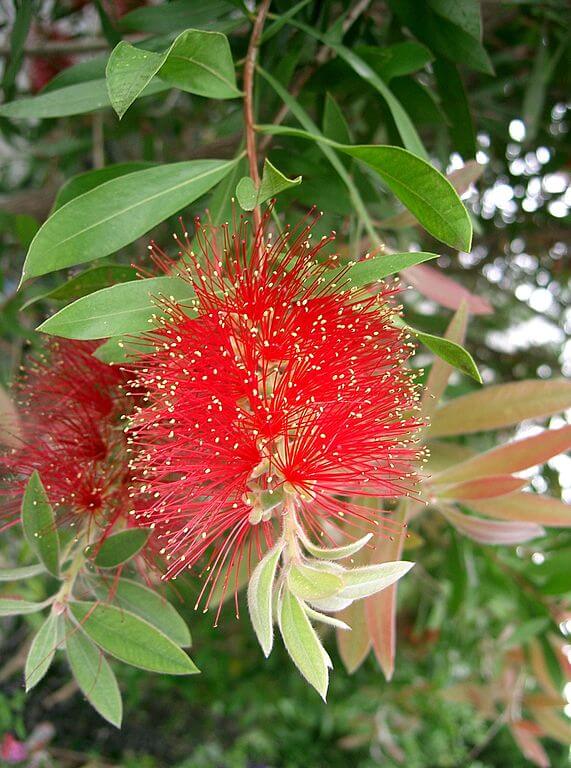

2.4 Callistemon rigidus
Perennial flowering shrubs 3 - 6 m high. Abundantly branching, thin, flexible, often drooping stems form a rounded crown of plants. The leaves are very narrow, linear, dull, up to 12 cm long, green, if damaged, they emit a pleasant aroma. Young leaves and shoots are slightly pubescent. The flowers are collected in small, attractive apical inflorescences 4 to 7 cm long.
You may also be interested in:
Callistemon is an exotic shrub from the Myrtle family. Its amazing inflorescences, consisting of many long stamens, form unusual brushes at the ends of the shoots. For this, callistemon can often be found under the names "Bengal candles" or "mnogotynochnik". Exotic bushes are good both in the garden and indoors. In the summer they are used to decorate terraces or balconies, and in the winter they are taken into the house. It is not difficult to take care of the plant, so even a novice florist will be able to delight himself with tropical exoticism. In addition, callistemon secretes phytoncides, which prevent the spread of pathogenic microbes in the air.
Botanical characteristics
Callistemon is a genus of evergreen shrubs and trees. In nature, their height is 0.5-15 m. Domestic specimens are more modest in size. Shoots branch from the base and form a dense, but rather uneven crown. The lateral processes protrude in all directions. They are covered with short petiolate leaves with a leathery surface and slight pubescence on the back.Lanceolate leaf plates with a pointed edge are attached to the shoots one by one, a relief central vein is clearly visible on them. The foliage surface contains small glands that secrete essential oils.
In May-July, spike-shaped inflorescences bloom at the ends of the shoots. Like most myrtle flowers, the flowers do not have petals, but they contain numerous bundles of long stamens. Most often they are colored red, but there are varieties with orange, yellow and white inflorescences. The length of the brush-like inflorescence is 5-12 cm, and the width is 3-6 cm.
Callistemon is pollinated by small birds. After that, at the beginning of autumn, the fruits ripen - spherical seed pods. They are covered with a dense woody shell. The capsule contains small brown seeds with a diameter of 5-7 cm.
Pests and common problems
Callistemon can be attacked by pests such as, and.
the main thing
remedy
with the enemies of the plant - regular inspection and avoidance of dry indoor air. If the pest has managed to attack, it must be destroyed with chemicals. In the event of a scabby attack, the plant should be treated with soapy water.
Common problems that appear when growing callistemon at home:
- wither and then the leaves fall
- lack of light, waterlogged soil; - specks appeared on the leaves
- scabbard attack; - the plant dries
- a lot of lime in the soil.
Callistemon is a truly amazing plant. He is not only an amazing handsome man, but also a real one. room healer
... Give him a piece of your love and care - and callistemon will answer you with luxurious greenery, magnificent flowering and purification of the air in the house.
Description. Callistemon or red grass - evergreen trees or shrubs up to 2 m high with gray-green, tough, narrow-lanceolate leaves up to 8 cm long and about 2 cm wide. Large cylindrical fluffy inflorescences up to 10 cm long, consisting of many flowers and formed on the tops of the shoots. Each flower bears very long stamens in bright red, pink, white, salmon, pink or purple with yellow tips. After flowering, capsules are formed containing seeds that can persist for several years on the branches.
Height
... As a houseplant, it reaches a height of 1.5 - 2 m., Grows quickly enough.
Callistemon species
The genus Callistemon includes 37 plant species. The most popular in our country received callistemon lemon or citrus
... It is named so for the aroma that pounded leaves exude. The species is native to Southeast Australia. Sprawling bush 1-3 m in height, covered with dark green bluish lanceolate leaves. The length of the sheet plate is 3-7 cm, and the width is 5-8 mm. Flowering occurs in June-July. At the ends of one-year-old shoots, dense crimson-red inflorescences 6-10 cm long and 4-8 cm wide bloom.Popular varieties:
- White Anzac - a bush up to 1.5 m high blooms with snow-white inflorescences;
- Reeves pink - has bright pink flowers;
- Demens Rowena - scarlet staminate flowers bloom on a shrub up to 1.5 m high, gradually they become lighter and by the time of wilting they are painted in a pale pink hue;
- Mauve mist - differs in purple inflorescences.
Trees 4-8 m high can be found in England. The branches are covered with narrow oval leaves with an elongated base. The length of dense leathery foliage is 3-7 cm. In June, dense inflorescences 4-10 cm long bloom. Scarlet stamens have darker, burgundy anthers.
The shrub-shaped plant up to 3 mm in height has very narrow leaves. Outwardly, they look more like pine needles. Dark green glaucous leaves up to 3 cm long do not exceed 1.5 mm in width. Foliage is collected in whorls at the ends of young branches. In June-July, cylindrical inflorescences with golden-yellow stamens bloom.
What do we know about the beautiful callistemon?
A native of Australia, Callistemon is a native of the myrtle family, which has about 40 species in its genus.
It grows in the form of a flowering evergreen tree or shrub with narrow spear-shaped leaves
green color. The name of the plant comes from the Greek words "kallos" - beautiful and "stemon" - stamen.
Callistemon is famous for its unusual crimson or red inflorescences, similar to fluffy cylindrical spikelets
, or to be more precise, on
dish brushes
.
Bright hairs with small dots at the tip, creating the shape of an inflorescence, are nothing more than stamens sticking out of the small inconspicuous flowers of the plant. For this feature, callistemon received another name - redbottom
.
All callistemons have fungicidal properties
.
Their leaves when moved, touched or broken allocate
essential oil
with many active ingredients. The mere presence of a plant in the house improves air quality and reduces the risk of colds.
Only a few types of callistemon are cultivated at home:
- Callistemon citrynus
- a dense bush or small tree with bright red inflorescences, reaching 2 meters in height in a room. Its foliage is fragrant with a fresh lemon scent, purifying the air throughout the house. Lemon Callistemon, when crossed with other species, gave rise to varieties with unusual flower colors: Burgundy - purple-red inflorescences, Mauve Mist - purple, White Anzac - white, Reeves Pink - pink. - Callistemon viminalis
- differs from the lemon in the drooping shape of the stems. The most popular variety of this species is Captain Cook. It grows up to 1.5 meters high, in nature its standard height is about 7 meters. - Callistemon rigidus
- a small upright tree with lush raspberry inflorescences. She tolerates curly hair well. - Callistemon salignus
- blooms in spring or summer. Its inflorescences are bright yellow in color.
The plant begins to bloom only 5-6 years after planting. Callistemon blooms its luxurious flowers in spring and summer.
Reproduction
Callistemon is propagated by sowing seeds and cuttings. They begin to grow it from seeds in August-March. Seeds are sown without preliminary preparation on the surface of wet sandy-peat soil. The container should be covered with plastic, ventilated daily and sprayed as needed. Seedlings appear within a month, after which the film is removed. When the seedlings grow two true leaves, they are dived in separate small pots. Plants develop slowly and bloom for 5-6 years.
A more convenient method for propagating callistemon is cuttings. It is necessary to wait until the adult plant develops well and has lateral shoots 7-12 cm long. Cuttings with 3-4 internodes are cut. The lower cut is treated with phytohormones for root development. They are planted in pots with sand or sandy-peat soil. The seedlings are covered with a cap, but ventilated daily. Heating the soil can speed up rooting. Within two months, about half of the cuttings take root.
Reproduction methods
As we said above, callistemon can be grown using seeds and cuttings. Each method has its own advantages and disadvantages:
- If planting is by seed, then for the first planting, you can use a large box filled with a mixture of peat and sand. The seeds do not need to be lowered deeper than 1 cm, otherwise it will be more difficult for them to germinate. After sowing, water and cover with foil to create a greenhouse. When the sprouts stretch up to 2-3 cm, it's time to dive. This time you will need 7-9 cm pots. During this period, seedlings grow rather slowly, 4-5 cm per year.The first flowers appear no earlier than 4-5 years.
- Lignified shoots 5-8 cm long are suitable for grafting. They are placed in boxes filled with sand and kept during the winter at a temperature of 18-20 ° C.
Like seeds, cuttings need to create a greenhouse environment by covering the box with foil and spraying the plants twice a day. When the seedlings have a well-developed root system, it is time to transplant them into pots with a diameter of 7 cm. Reproduction by cuttings accelerates the flowering of the plant: in this case, it is possible in a year or two.
Home care
It is not difficult to care for callistemons, they are quite undemanding plants. However, they need to create specific conditions. Callistemon needs bright lighting. For several hours a day, direct sunlight should touch its foliage. In a hot room in summer, it is better to shade the bushes from the midday sun or take them out into the fresh air. Additional lighting may be needed in winter. In too low light, flower buds may not form at all.
The optimum average annual air temperature is + 20… + 22 ° C. In autumn, it is lowered to + 12 ... + 16 ° C. If callistemons are put outside, then when the temperature drops to + 5 ° C, it is time to bring the plants into the house. Winter cold snaps are necessary for the laying of flower buds.
Callistemon should be watered regularly. Like all tropical plants, it reacts poorly to drying out of the soil. Shoots quickly begin to slow down in growth and become bare. Stagnation of water should not be allowed, as it leads to decay of the roots. For irrigation, take well-purified water, slightly warmer than room temperature.
Callistemon leaves are covered with a thin waxy coating, so they hardly evaporate moisture. This means that it is not necessary to artificially increase the air humidity. And yet, Callistemon gratefully responds to periodic spraying and bathing. The procedure should be carried out before or after the flowering period.
In April-September, callistemon is fed with mineral fertilizers for flowering plants. The top dressing diluted in water is applied to the soil twice a month.
Since the bush forms many protruding side shoots, it should be cut to form a crown. Pruning also promotes branching and more lush flowering in the coming season. It is carried out when the plant reaches a height of 50-60 cm. The best time is the end of summer, immediately after the end of flowering.
Callistemon is transplanted every 1-3 years in the spring. They use stable and deep pots in which the root system can develop freely. Plants prefer loose, light soils with a neutral or slightly acidic reaction. The soil mixture should contain turf, leafy soil, peat and sand. You can also buy universal soil for indoor flowers in the store. Clay shards or expanded clay are preliminarily laid out at the bottom of the pot to ensure drainage. When transplanting from the roots, at least half of the old earthen coma should be cleaned off.
Bright callistemon bushes will enliven the interior of the room and decorate the summer garden. Essential oils that exude leaves, purify the air, and also contribute to the health of the household. They have bactericidal properties.
Some growers claim that the presence of callistemon in the house increases the owner's self-esteem and contributes to his firmness of character. This plant is simply necessary for insecure and doubting individuals.
Callistemon is a delightful evergreen woody plant from the myrtle family with good decorative data. His homeland is Australia, Tasmania. In total, the genus Callistemon has about 30 species, but only a few of them are popular with our gardeners: callistemon lemon,
callistemon fine, callistemon crimson, callistemon pine-leaved and
callistemon rod-shaped
.
The people often call the plant "brushes" or "bottle brushes", since the inflorescences really resemble in shape household brushes for washing bottles.
Unusual callistemon flower
- a cylindrical inflorescence with rich red or yellow staminate threads up to 10 cm long, became the reason for the second "popular" name - "Bengal candle".
Care
Taking care of Callistemon won't take long. For normal development and regular flowering, the plant needs feeding and timely pruning.
It is fed twice a month during the period of active growth (spring-summer). For these purposes, mineral complexes for flowering plants, which can be found in any specialized stores, are suitable. In winter, callistemon does not need such nutrition.
Pruning is carried out at the end of the flowering period. After the dry inflorescences fall off, peculiar knobby growths remain in their places. They not only spoil the appearance of the exotic, but also become an obstacle to the next flowering.
Also in early spring, the plant is pruned to shape and stimulate growth. This is necessary for the normal development of callistemon, but it can also be used to create an original composition from a bush.
This exotic feels better in cramped conditions, so it is necessary to transplant it in the spring, when the roots are tightly entwined with an earthen lump in a pot. For young plants, the procedure must be carried out every year, but for older specimens, one transplant for 2-3 years is enough.
The soil in the new pot should be identical to the first planting. If the plant has reached a sufficiently large size, then for its comfort it is advisable to change the top layer of soil in the pot to a substrate once a year.
It is cooked in the same proportion as the soil, but from time to time for a change it does not hurt to replace it with a mixture of pine bark and.
Often a white or reddish bloom appears on the topsoil in the pot. It is salts and various impurities that come out from the composition of the water with which the plant is watered. If this happens, simply replace the topsoil with a new substrate.
Useful properties of callistemon
Due to its unusual and spectacular appearance, first of all, the bright color of the callistemon flower, this exotic plant will never get lost among its green neighbors and will be a real decoration of a winter greenhouse, room or garden.
As a true representative of the myrtle family, callistemon has beneficial properties - it heals the air, saturating it with phytoncides. Very resistant to unfavorable urban conditions, gas contamination of roadside areas, I can. Helps fight soil erosion.
Watering and humidity
Callistemon should be watered regularly, drying out, waterlogging and acidification of the soil is unacceptable. This threatens not only with dry leaves, but also with deformation of the shoots.
Water is taken at room temperature, separated without chlorine elements.
Callistemon has no complaints about humidity, it calmly tolerates dry air. With gratitude, he will take a warm shower in order to freshen up and prevent the appearance of parasites.
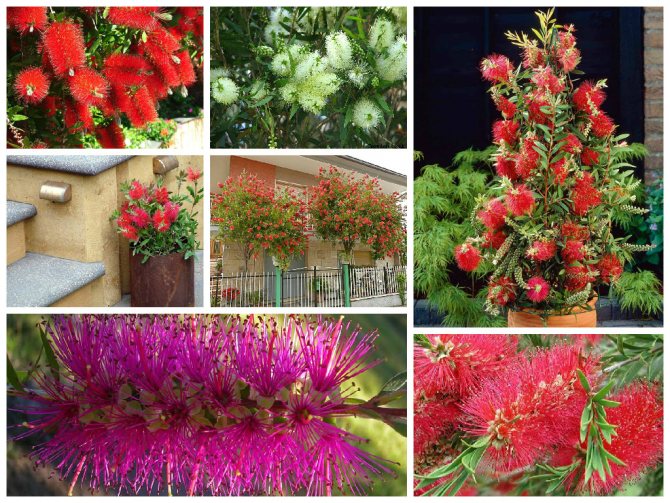

Variety of colors and types of Callistemon.
Reproduction of callistemon
Callistemons are propagated from June to August by cuttings. To grow callistemon from seed
It is also possible and quite simple: sowing is carried out from August to March, the seed placement in the soil is superficial, shallow. The soil is preferable light (sand with peat). From above, the crops are covered with glass and placed in a well-lit place.
Seedlings emerge in about a month. When the seedlings reach a height of 3 cm, make a dive. Seedlings grow slowly, adding about 3 - 5 cm per year.
Callistemon growing tips, flower care
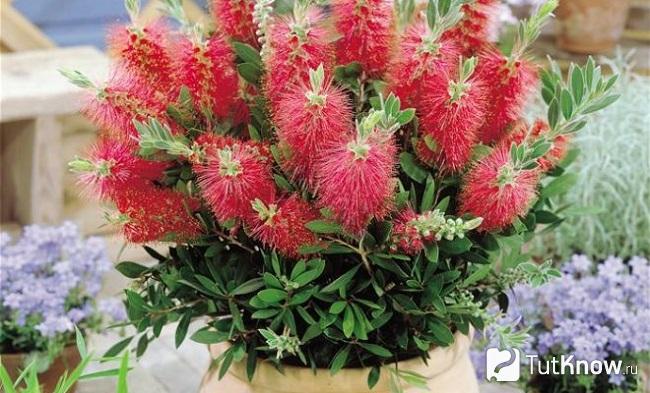

- Lighting for a beautiful meadow should be bright, but without direct sunlight. West and east facing windows will do. In the summer, you can take it out into the garden or on the balcony, but take care of shading.
- The temperature of the content when growing a plant with ruffy inflorescences from spring to the end of summer should be maintained within 20-22 degrees, and with the arrival of autumn days and in winter it is lowered, it is 12-16 degrees. Such a decrease in heat will be the key to successful further flowering, but at this time the humidity should not be increased so as not to provoke putrefactive processes. If the heat indicators are not reduced, then the bush will quickly begin to grow and will not form flowers.
- The air humidity is maintained at a normal level, the plant tolerates dry indoor air well, but loves frequent ventilation. It is only important to ensure that the callistemon is not exposed to a draft. On the hottest summer days, it is recommended to spray every 2-3 days. The water should be warm and soft so that the drops of liquid do not form white spots on the foliage.
- Watering for a plant with brush inflorescences is carried out in the summer months once a week, but very abundantly, and in winter 8-10 days should pass between humidifications. The soil between them should dry out a little, but it is not worth bringing the earthen coma to complete drying, stagnation of moisture in a pot or in a stand under a flowerpot is more harmful for a red-grass plant - this can lead to the development of rot. Water is used only soft, well-separated and warm.
- Fertilizers for callistemon are applied during the growing season, which occurs in spring and summer. The regularity of such actions is every 14 days with the use of dressings, which do not include lime. You can use fertilizers for flowering indoor plants. The bush responds well to organic products. With the arrival of autumn and winter, it is not required to feed the bush.
- Pruning is carried out to form the required outlines of the bush. Callistemon tolerates this formation very well, and it serves to enhance branching.
- When carrying out a transplant, it is recommended. Change the pot and the soil in it for young plants annually, and also in the case when the earthen lump is completely entwined with roots. They guess this operation for the spring period, as soon as new young leaves are formed on the bush. If the callistemon specimen has reached a large size, then only the upper layer of the substrate is replaced in the pot. In a new container, holes are made in the bottom to drain excess liquid and then a good layer of drainage material is poured - 2-3 cm. This can be medium-sized expanded clay or pebbles. A substrate that is rich in nutrients and with low acidity is suitable for red grass. You can make up a soil mixture yourself by mixing in equal parts sod soil, leafy soil, coarse sand (you can replace it with perlite), moistened peat substrate or humus. Some growers recommend growing such a ruffy plant in a modified gravel composition based on peat soil, pine bark (parts should not exceed 3–6 mm in size) and perlite.
Transfer
During the first three years of life, the plant requires an annual spring transplant. It is enough to replant adult specimens every 3 years or as the roots fill the volume of the flowerpot. When choosing a container, you should give an allowance of no more than 3 centimeters in the upper diameter, since relatively close conditions of detention are a prerequisite for a flowering culture at home.


Callistemon
Callistemon (Callistemon) has a few more names - beautifully lined, red lined. These are shrubs or small trees, they belong to the Myrtaceae family and come from Australia. They can grow here only in indoor conditions or in winter gardens, since they do not tolerate frost. They are very popular due to the unusual shape of their flowers.
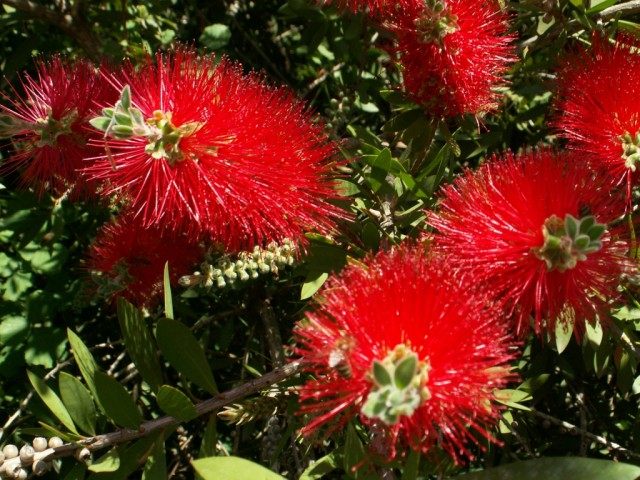

Callistemon, or Krasnoychnochnik, or Krasnoychnochnik
Pruning callistemon
When callistemon shoots reach a height of 20-25 cm, it begins to branch. If you do not cut the plant, then the crown grows strongly. To prevent this from happening, every spring it is necessary to prune its branches by 20-25 cm. Due to the specific features of the growth of callistemon, plucking the top is impossible.
Callistemon is cut off after flowering, since pineal processes with seeds appear on its branches, they spoil the appearance of the plant, but have medicinal properties. Pruning inhibits plant growth, stimulates branching. Due to untimely pruning, the plant may stop blooming.
Choosing a place for planting and preparing the soil
For planting callistemon, it is recommended to choose the east, west or south side. The main thing is that there is a lot of diffused light in this place.
Although the culture is exotic in origin, it does not tolerate hot weather. In the summer season, the optimal temperature regime is at the level of + 20-22 degrees. In winter, it should be + 12-16 degrees.
It is recommended to plant a culture in a nutritious substrate. To prepare it, it is necessary to mix turf soil, deciduous soil, peat and river sand in a ratio of 4: 2: 2: 1.
Landing dates
It is allowed to plant an indoor flower in the ground from August to March.
Planting a plant
The flower shops sell ready-made plants. You can also purchase seeds or cuttings.
When planting a flower with seeds, you should use a medium-sized pot. It is recommended to place a perlite drainage layer at the bottom. Then pour in a nutritious substrate and place seeds in it.
After that, it is recommended to cover the pot with glass or film, put it to the window and water it twice a day. After 2-3 weeks, sprouts will appear.
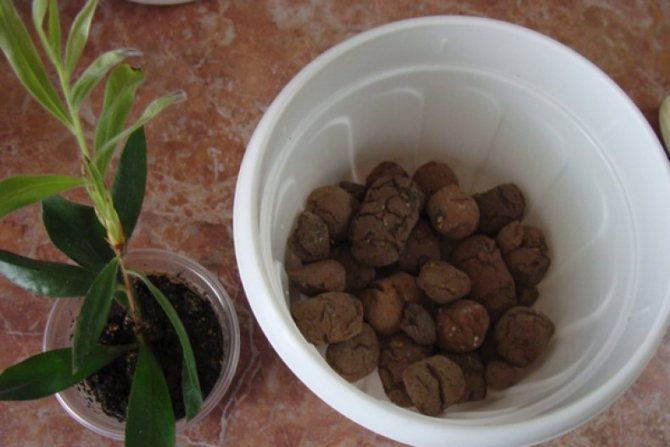

Drainage is required when planting
Seasons care
In winter, a young exotic will be comfortable in the brightest place, and in the summer months it can be taken out into the yard under a shelter. A year later, in the spring, the bush can be pampered by planting it on the street, and by autumn it will already be a lush callistemon tree with a densely leafy crown. In the fall, it should be transplanted into a pot again and put to winter in a bright, cold corridor at a temperature of 7-10 ° C. The tree can hibernate almost without watering. In the summer, in the fourth year of life, callistemon will reward your efforts and delight you with the first flowering.
It should be borne in mind that with good care, this special tree can grow not only upward, up to almost two meters, but also in width. There won't be enough space for him in the apartment. Then such a colossus can be attached, for example, to a school. From this follows the conclusion: callistemon needs mandatory pinching, moreover, when the plant height reaches 20-30 centimeters. To prevent the exotic from overgrowing, branches should be shortened every spring, thereby forming a compact tree or bush.
Propagation by cuttings
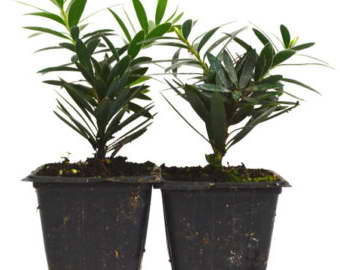

Callistemon cuttings photo
Callistemon is also propagated by cuttings. Apical lignified shoots 5-8 centimeters long are used. The cutting takes root with water or in wet vermiculite for about two months. To make the process take place faster, the cuttings are treated with a growth stimulator before rooting. They are planted in mini-greenhouses with bottom heating, maintain high humidity inside and systematically ventilate.
Planting and leaving
Caring for callistemon is rated as moderately difficult, which is primarily due to its tropical origin and photophilousness.
Lighting requirements
All varieties of culture are photophilous and tolerate even midday sun rays perfectly. The bush can stand on a southern, southeastern or southwestern windowsill, without suffering at all from bright sunlight. However, due to its impressive size, its placement on the windowsill can be difficult, and if there is a lack of lighting, the multi-stalk plant may not bloom. The problem can be solved by installing an additional light source in the form of a fluorescent lamp.
Temperature regime
Compliance with the correct temperature regime will largely depend on how the shrub will bloom, and whether it will bloom at all. With the rise in outdoor temperatures in spring and summer, a warmer content of callistemon is needed in the room as well. With the onset of autumn, the temperature must be gradually reduced. The difference between summer and winter temperatures must be at least 5 degrees. If the plant hibernates in a warm place, it will not rest, which will inevitably affect its decorative qualities.
Watering
Water for irrigation should be at the same temperature as the air in the room. It must first be defended in order to warm up and destroy traces of chlorine. Both a lack and an excess of moisture lead to a loss of decorativeness of the specimen. Watering should be done in moderation, but be regular. You need to focus on the state of the substrate. It should not dry out or be excessively wet, waterlogged. The drainage layer in the pot should help regulate this process.
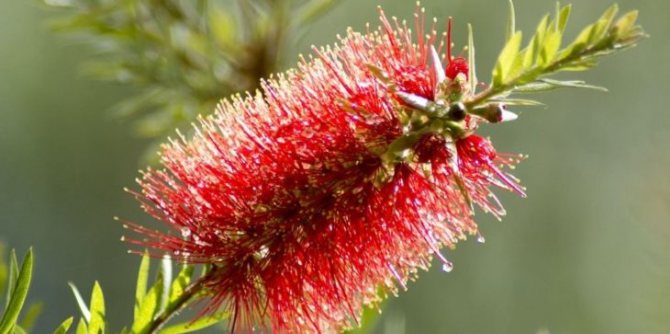

Air humidity
The plant requires not so much increased air humidity as sanitization, cleaning the shower from dust. If the room temperature meets the requirements, the air humidity does not really matter.
Soil requirements
For planting callistemon, a purchased soil mixture for flowering perennials is quite suitable. A medium for growing roses is ideal. Basic requirements for the soil: looseness, neutral acidity or slightly acidic reaction, water permeability. Based on these requirements, you can independently compose a nutritious soil mixture. Arrangement of a drainage layer at the bottom of the pot is mandatory.
Top dressing
For successful flowering and rapid growth of callistemon, it is recommended to water it twice a month with the addition of complex mineral fertilizers. Better than others, compositions intended for flowering indoor crops are suitable. Fertilizer is applied only during the active growing season. With the onset of autumn, all feeding should be stopped.
Callistemon
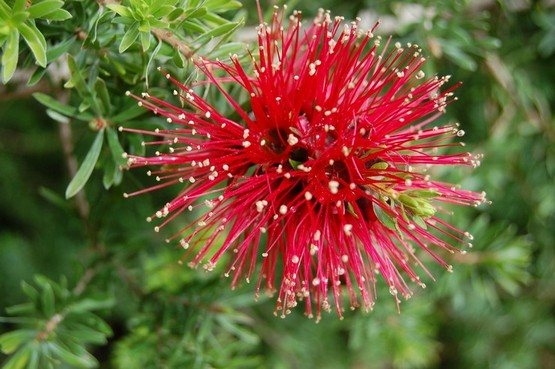

Callistemon is an evergreen shrub or tree from the Myrtle family, common in parts of the Australian continent. Distinctive features of the plant are a lush crown with abundant flowering, narrow leathery leaves of a rich green hue, many shoots sticking out in different directions, spike-shaped inflorescences of red or pink flowers up to 12 centimeters long, reminiscent of a fluffy brush for washing bottles and fruit capsules about 7 millimeters in diameter. Callistemon leaves contain a large amount of essential oils, the bright aroma of which can be felt when the leaf plate is damaged.
Callistemon lemon and other types of indoor plants
Callistemon lemon (Callistemon citrinus)
Callistemon the lovely
On numerous shoots, relatively long (up to 10 cm) leaves are located, along the entire surface of which veins protrude. The apex of a narrow leaf can be either pointed or rounded. Reddish-brown flowers with bright red-pink stamens appear on the erect peduncle;
Callistemon willow
This shrub can grow up to 2.5 m in height. On the stem of this plant are alternately narrow, long (up to 11 cm in length and 12 mm in width), pointed leaves. The creamy or light yellow flowers of the houseplant callistemon of this species are collected in long, spike-shaped inflorescences. Bright pink stamens give special beauty to the flowers;
Callistemon the handsome
Tall shrub (up to 3 m) with long (10 cm), belt-like leaves. The inflorescences are the largest of all types. Flowering time: spring - summer.
These photos show caddistemons of different types, the description of which is given above:
Types and varieties of callistemon
Callistemon lemon was the first to reach Europe thanks to Joseph Banks.Its natural habitat is Australia, New Caledonia, Tasmania. There callistemon can be found in swampy areas. A characteristic feature of this species is the scent of lemon when the leaves are rubbed.
Callistemon lemon
The most common representative of the species, which in its homeland has an approximate size of 2-4 meters. The diameter of the crown of a small tree or shrub reaches 2-3 meters. The leaves are narrow, spear-shaped, the flowers are bright red in color. The flowering period occurs in early spring. Pollination of flowers is carried out by insects, birds and small bats.
Thanks to the lemon callistemon, it was possible to breed many varieties, crossing it with other species. Most of the varieties were obtained at random. There are 35 known plant species. All of them have different leaf shapes, different colors of inflorescences.
Callistemon is popular for its unusual appearance and invaluable medicinal properties. The leaves of the plant are rich in essential oils. They have a bactericidal effect. Callistemon improves air quality in the room. This helps to avoid colds. The plant is unpretentious, so it often decorates the windowsills of many apartments.
Callistemon rod-shaped
Has long and flexible branches. In natural conditions, it reaches seven meters. As a pot culture, a variety called Captain Cook is grown. The rounded shrub has a crown with a diameter of 1.5-2 meters. It has drooping branches and narrow leaves. In the spring, amazing red brushes appear on it.
Callistemon hard
This is a small tree. It got its name from the narrow and tough leaves. During the flowering period, raspberry inflorescences appear on it. The breeders also managed to breed varieties with darker inflorescences.
Callistemon Description
Callistemon is an evergreen plant. Inflorescences with long stamens resemble bottle brushes. It is the stamens that give the flowers a spectacular and original look, while the petals are small and inconspicuous. Flowers up to 12 cm long, dense, cylindrical in shape. Appear at the ends of branches. After flowering, woody small spherical fruits are formed.
In nature, callistemon flowers are pollinated by birds that come to feast on sweet nectar. The narrow, alternate leathery leaves are so tough that their sharp edges can hurt. The leaves contain essential oil. They are arranged in a spiral around the stem. Callistemon has an interesting feature - its leaves are always turned to the sun by the edge. This reduces their heating, and the plant protects itself from moisture loss.
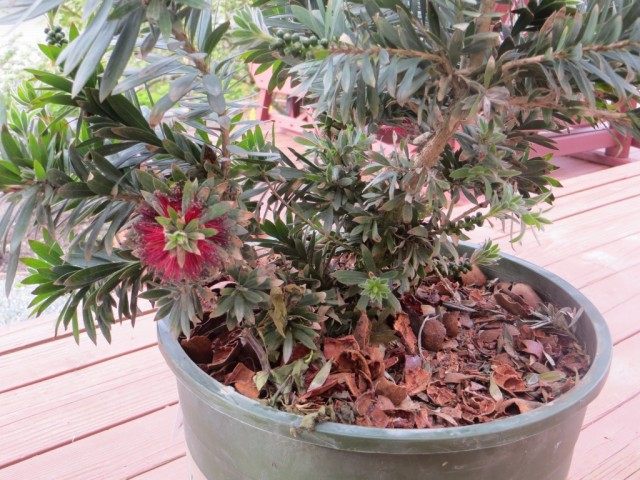

Callistemon lemon "Little John". <>

